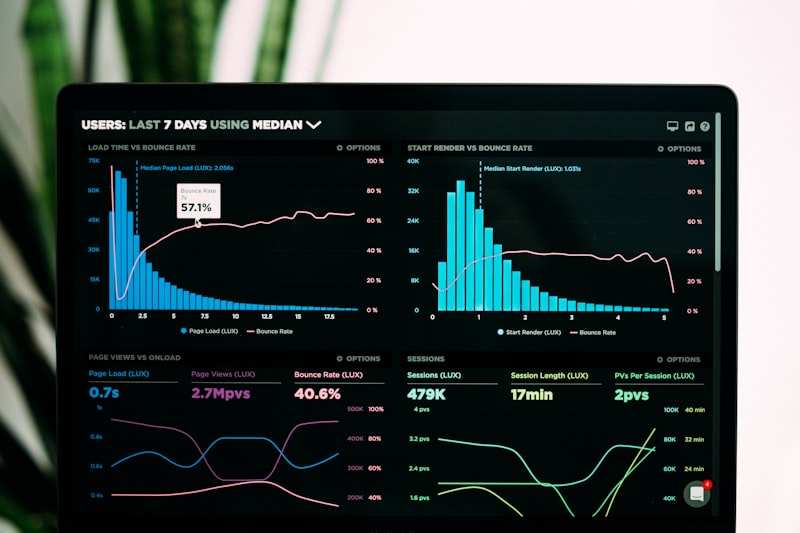Building a Sustainable Freelance Career: Beyond the Side Hustle
Transitioning from casual freelancing to a sustainable, long-term career requires strategic planning and intentional business development. This guide explores how to move beyond the feast-or-famine cycle and build a freelance business that provides stability, growth, and professional fulfillment.
Mindset Shifts for Long-Term Success
Sustainable freelancing begins with adopting the right mindset:
From Hobbyist to Professional: Treat your freelance work as a serious business, not just extra income.
From Transactional to Relational: Focus on building long-term client relationships rather than one-off projects.
From Generalist to Specialist: Develop deep expertise in a specific niche where you can command premium rates.
From Reactive to Proactive: Implement systems and processes rather than constantly putting out fires.
"Freelancing is a business, not a back-up plan." - Unknown
Defining Your Niche: The Foundation of Sustainability
A clearly defined niche allows you to:
- Stand out in a crowded market
- Charge higher rates for specialized expertise
- Develop efficient systems for recurring project types
- Build authority and recognition in your field
To identify your ideal niche:
- List your unique skills and experiences
- Identify industries or client types you enjoy working with
- Research market needs and pain points
- Look for intersections between your strengths and market demand
Examples of strong niches:
- Email marketing for SaaS companies
- Explainer videos for tech startups
- HR compliance consulting for restaurants
- Conversion copywriting for e-commerce brands
Building Recurring Revenue Streams
Sustainable freelancing requires moving beyond one-time projects. Implement these recurring revenue models:
Retainer Agreements: Clients pay a monthly fee for a set amount of work or availability.
Subscription Services: Offer ongoing services like content creation, social media management, or maintenance.
Membership Programs: Provide exclusive content, tools, or community for a monthly fee.
Licensing: Create templates, tools, or products clients can license for ongoing use.
Maintenance Packages: Offer updates, support, or optimization services for past projects.
Even one or two retainer clients can provide the financial stability to weather project gaps.
Developing Your Personal Brand
A strong personal brand makes you the obvious choice in your niche:
Online Presence: Create a professional website showcasing your expertise, portfolio, and testimonials.
Content Creation: Publish articles, videos, or podcasts demonstrating your knowledge.
Public Speaking: Present at industry events (even virtual ones) to increase visibility.
Networking: Build genuine relationships with peers and potential clients in your niche.
Reputation Management: Collect testimonials and case studies from satisfied clients.
Consistency is key—regular, valuable content builds trust over time.
Creating Systems and Processes
Systematizing your business reduces stress and increases scalability:
Client Onboarding: Develop a standardized process for new clients (questionnaires, contracts, welcome packets).
Project Management: Use tools like Asana or Trello to track projects through consistent workflows.
Financial Systems: Implement invoicing, expense tracking, and tax planning processes.
Content Repurposing: Create systems to maximize the value of your content across multiple platforms.
Knowledge Management: Build a searchable repository of past work, templates, and resources.
Document every repeatable process to save time and maintain quality as you grow.
Strategic Pricing for Sustainability
Sustainable freelancing requires pricing that accounts for:
- Non-billable hours (marketing, admin, professional development)
- Business expenses (software, equipment, insurance)
- Time off and sick days
- Retirement savings and benefits
- Tax obligations
Implement value-based pricing rather than hourly rates whenever possible. Package services to emphasize outcomes rather than effort.
Building Strategic Partnerships
Collaborate with complementary freelancers and businesses to:
- Offer more comprehensive solutions to clients
- Receive qualified referrals
- Share resources and knowledge
- Take on larger projects collectively
Identify potential partners who serve the same clients but offer different services (e.g., web developers partnering with copywriters).
Continuous Learning and Skill Development
To remain competitive long-term:
Deepen Niche Expertise: Stay current on industry trends and emerging needs in your specialty.
Expand Adjacent Skills: Add complementary skills that increase your value (e.g., a designer learning basic coding).
Business Acumen: Invest in learning about marketing, sales, and financial management.
Technology Proficiency: Master tools and platforms relevant to your services and clients.
Allocate time and budget for ongoing education—it's an investment in your business's future.
Work-Life Sustainability
Avoid burnout by implementing:
Boundaries: Set and communicate clear work hours and availability.
Workspace: Create a dedicated, ergonomic workspace separate from living areas.
Time Off: Schedule regular vacations and weekends, just as you would in traditional employment.
Health: Prioritize exercise, healthy eating, and mental health—your business depends on you.
Community: Combat isolation through coworking spaces, masterminds, or professional groups.
Sustainable freelancing means designing a career that supports your ideal lifestyle.
Planning for the Future
Treat your freelance career as a long-term endeavor:
Financial Planning: Establish retirement accounts, emergency funds, and insurance coverage.
Succession Planning: Consider how your business could operate without your daily involvement.
Asset Building: Focus on creating intellectual property, systems, and brand equity that have lasting value.
Exit Strategies: Even if you love freelancing, understand options for selling or transitioning your business.
Final Thoughts
Building a sustainable freelance career requires moving beyond the side hustle mentality to embrace professional business practices. By specializing strategically, creating recurring revenue, systematizing your operations, and investing in your long-term success, you can transform freelancing from a precarious way to make ends meet into a rewarding, stable career path. Remember that sustainability isn't about working harder—it's about working smarter to create a business that supports both your financial needs and your quality of life for years to come.






